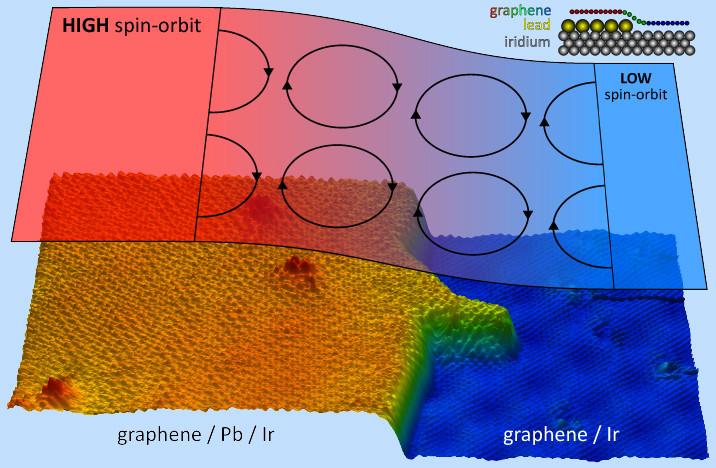Graphene now packs powerful magnetic punch thanks to lead atoms

In what could give a boost to the material of the future, a technique delivers powerful magnetic fields in graphene sheets interlaced with lead atoms.
A Madrid university study showed that placing islands of lead below layers of carbon that make graphene produces an interaction between the electron's spin and orbital movement, leading to powerful magnetic fields.
"This spin-orbit interaction is a million times more intense than that inherent to graphene, which is why we obtain revolutions that could have important uses, for example in data storage," explains Rodolfo Miranda, Director of IMDEA Nanoscience and head of the study.
Graphene, made of a single layer of carbon atoms is known for its strength and flexibility. Besides being a remarkable conductor, it exhibits extraordinary optical and electronic mechanical properties, but a lack of magnetic properties has limited its applications.
Researchers from IMDEA Nanoscience, the Autonomous University of Madrid, the Madrid Institute of Materials Science (CSIC) and the University of the Basque Country laid a layer of lead on another of graphene, in turn grown over an iridium crystal.
The electrons of this two-dimensional material behave like they would in the presence of a massive 80-tesla magnetic field, which facilitates the selective control of the flow of spins.
Spintronics or magnetoresistance is an emerging technology that uses the magnetic spin of electrons to store information bits.
Magnetoresistance is an effect that causes changes to the electrical resistance of materials under the effect of an external magnetic field. Giant magnetoresistance causes giant changes to resistance.
IBM produced the first GMR hard drive in 1997, and the use of the new technology is gradually increasing. GMR devices have broadened applications ranging from space, automotive, microelectronics to biotechnology.
The first generation of spintronic devices was based on the effect magnetic materials have on electron spin. But a second generation covers the magnetic effect of spin-orbit interactions as uncovered in this study.
The magnetism developed in graphene can help control the spin of electrons to produce the desired effect. The European Union project "Graphene Flagship" looks at such possibilities.
© Copyright IBTimes 2025. All rights reserved.





















